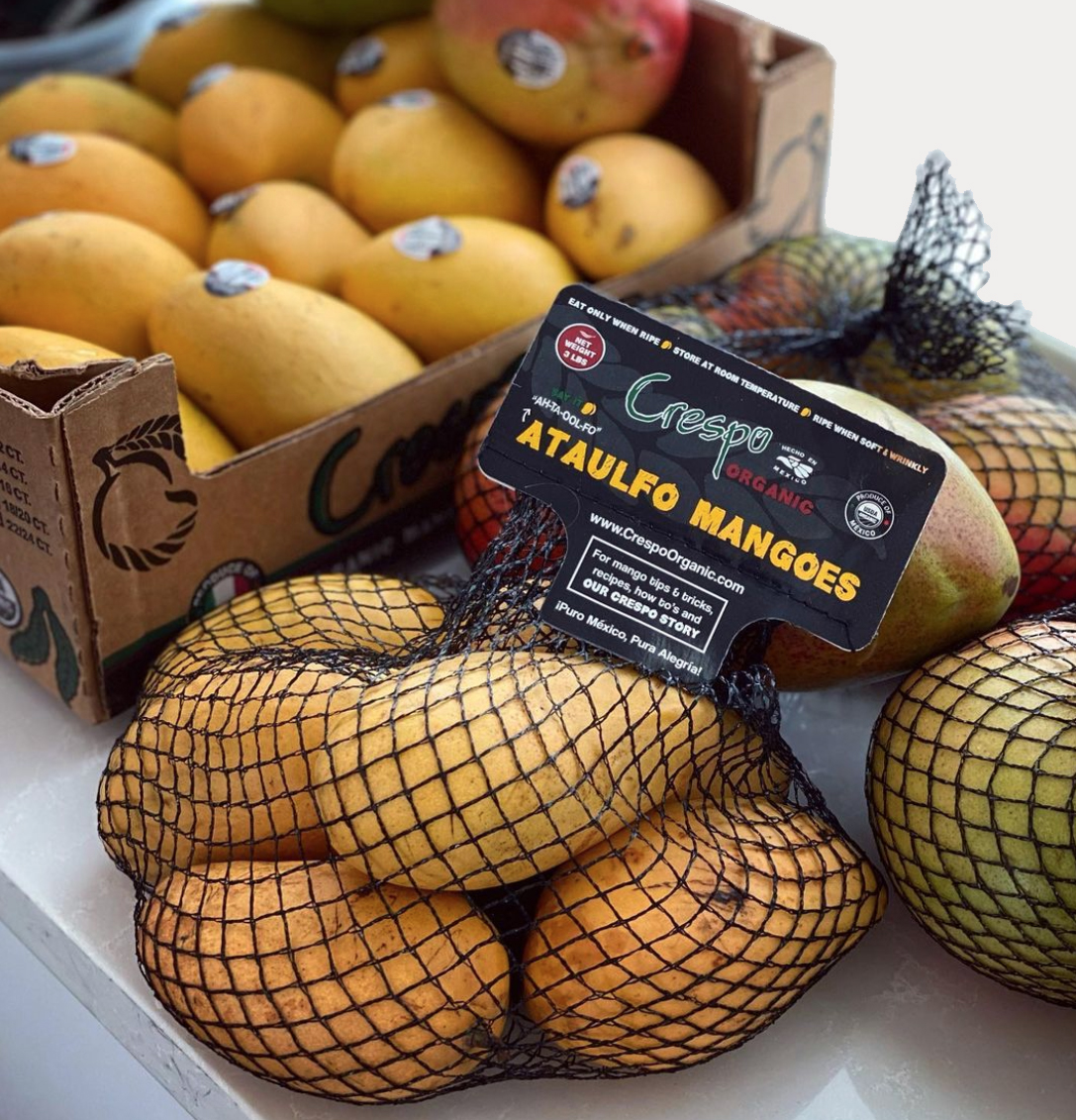Mexican mango season battles serious weather-related issues in the final leg
If you consider the current global mango season, the saying ‘when it rains, it pours’ fits well. Ironically, it wasn’t the rains that caused issues, until now.
Throughout the season, we’ve been monitoring the impact of the severe drought and abnormal temperatures on the Mexican mango crop from bloom to fruit. Recently, much-needed rains finally arrived, initially seen as a positive development. However, these rains, coupled with unusually hot, humid, and overcast conditions, have created ideal circumstances for anthracnose, a fungal disease that poses a significant threat to certain/most mango varieties. Despite the drought-stressed fruits benefiting in terms of increased size post-rain, anthracnose has swiftly emerged as a serious problem as it has begun to spread in many of the currently producing mango orchards. This has notably constrained the harvestable volumes of the southern Sinaloa Kents, which are currently at the peak of their season. Make no mistake this makes the current output of volumes from all Mexican producers in a volatile and unpredictable state.
Anthracnose at this stage can severely impact the health of the actual fruit. This disease thrives in high humidity and frequent rain. Overcast days with warmer temperatures exacerbate the situation, creating the excess moisture that the fungus loves. In a “good” or “normal” season, rains come as the fruit is being harvested, providing just enough moisture to grow the fruit bigger and juicier. Typically, the sun shines bright after the rains, drying up any excess moisture and creating the perfect climate and humidity for mangoes to thrive. Unfortunately, we have not had those ideal conditions during this Sinaloa season.
As a result, many of the Kent orchards in the southern parts of Sinaloa have become unusable, and possibly even the Keitt orchards, although it’s too early to tell. Many small lesions are popping up, leaving the season in volatile once again with unpredictable volumes. Everyone seems clear there are only a few weeks left of usable Kents in this region, which typically thrive until the end of August in this area. The dried sector, which typically consumes massive amounts of Kents from this region will be affected as well.
Most of this information is still unraveling but as the whispers get louder about the problems I thought it important to share what little I know. Against the backdrop of this uncooperative humid, hot and rainy weather, the latest crop report details are as follows:
Ataulfos
Both the southern Sinaloa (Rosario area) and the non-hot water bath zone in Mochis are entering the final week. In Mochis, the fruit has been smaller, averaging 20-22 count, and we have refrained from bringing any in due to their size. All of the Crespo Organic fruit has originated from the Rosario area in southern Sinaloa, where we’ve enjoyed excellent quality and larger sizing. The last of the Ataulfos will arrive at the end of the week so make sure to get them while you can!
Southern Sinaloa
Most of the anthracnose issues mentioned at the beginning of this article are concentrated in this hot water zone of southern Sinaloa. Currently, we anticipate only about two more weeks of selected Kent harvest from orchards unaffected by these problems. We are uncertain how the Keitt production will fare. As with the Kents in Mochis, the Keitts are currently in their greener stage and have not been affected by the weather. However, as the Keitts ripen and approach harvest the weather conditions will need close monitoring, it’s at this stage they become more susceptible to problems.
If the region continues to experience rainy, hot, and humid weather, similar issues of anthracnose are expected. Ideally, we hope for drier or sunnier conditions to ensure a successful Keitt season. Fruit size from this area has notably increased with the rains, averaging mainly 6-7-8 counts, with very few 9-10 counts remaining for the season. The fruit we are packing is exceptionally high in quality but limited. Keep in mind excessive rain at the wrong time causes problems to the mangoes’ skin and can often lead to cosmetic defects.
Los Mochis
As I mentioned the Mochis packhouses are currently finishing up Ataulfo season this week with very few left to pack and ship. What is there is small, too small for all you organic folks. So far very few have packed any Kents, its anticipated that Kent packing to start next week. Keitts timing will be determined soon. It is too early to predict the quality of the Mochis region as mentioned in my southern Sinaloa section. We will monitor the weather and report once fruit begins to be packed, again hoping for sunnier dryer days after the rain. Keep in mind there are several trains of thought by various experts that say in anthracnose times the lack of the hot water bath is not an advantage, as it can help quells anthracnose flare ups on the fruit. The weather will definitely be something to watch for as we move into the final Mochis zone with Kents and Keitts.
Specialty Mangoes
our specialty mangoes have had a successful year, boasting excellent quality and flavor, and generating continued excitement, particularly among consumers eager to explore more mango varieties. Our Crespo Organic Mango Queen line of specialty mangoes will only have a few more weeks of small volumes (pallets, not truckloads). These specialty varieties appear to be thriving in the current weather conditions, confirming Dr. Norris Ledesma’s insights from my interview with her on the ‘3 Minute Mango Expertise’ Summer Mango Mania episode.
Despite the difficulties, we have managed to produce, harvest and pack considerable amounts of high quality fruit, and our wholesaler and retail partners have managed to make beautiful mango magic, priced right, that consumers have been eating up. With our program we continue to do just that until the end, as far or near as it might be.














No Comments